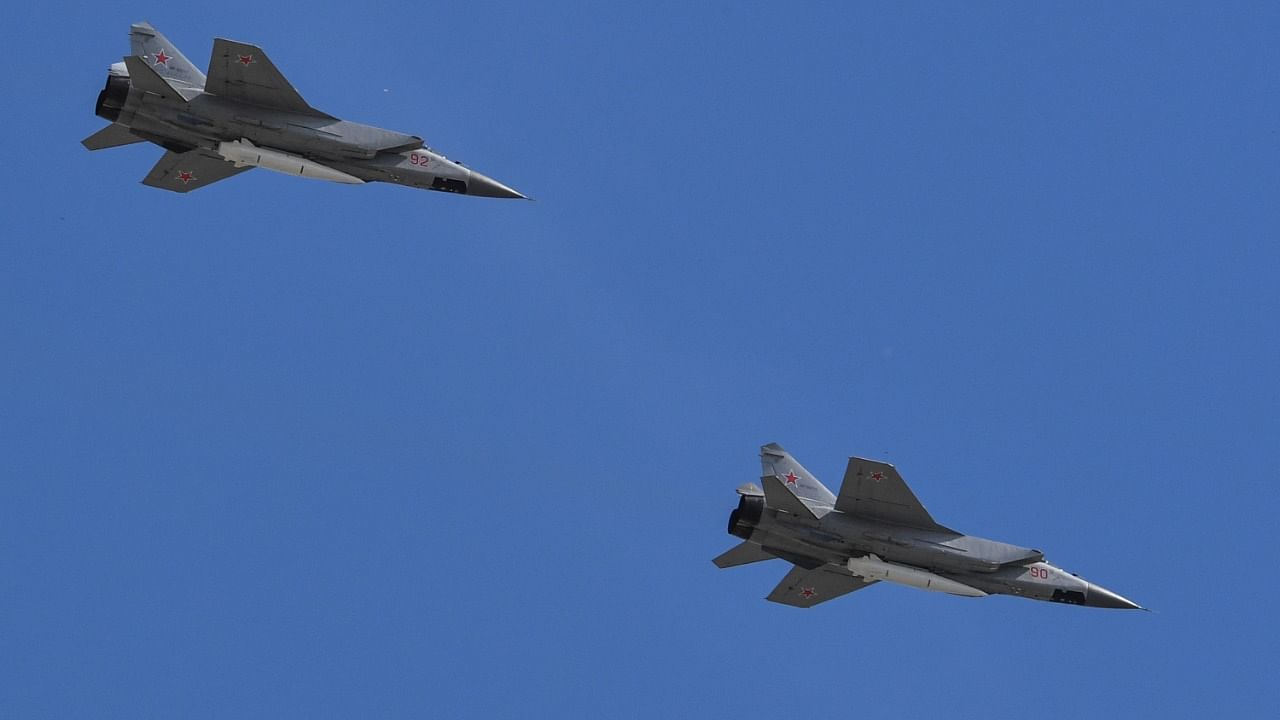
Russia this week used its Kinzhal hypersonic missiles on an ammunition depot in Ukraine, an event its state media said was the first-ever use of the armament ever since it entered service in 2017.
The missile, which can fly at 10 times the speed of sound, is the latest in a long list of modern military threats, which include thermobaric bombs and cluster bombs, which have raised concerns among defence experts around the world.
Legally, a missile can only be called hypersonic if it travels at a speed of at least 5 times the speed of sound - colloquially referred to as "Mach". The two main types of missiles under this category are cruise missiles and glide missiles (HGVs). The cruise missiles are limited to a height of 30,000 metres or below, while glide missiles can fly over that height.
According to the research service of the US Congress, glide missiles are launched from a rocket before gliding to a target, and hypersonic cruise missiles, are powered by high-speed, air-breathing engines during flight.
Vice-Chairman of the Joint Chiefs of Staff and former Commander of US Strategic Command General John Hyten has stated, these weapons could enable “responsive, long-range, strike options against distant, defended, and/or time-critical threats [such as road-mobile missiles] when other forces are unavailable, denied access, or not preferred,” the report said.
Among modern armaments, while the United States generally holds the technical lead in overall weapons development and deployments, Russia leads the world in hypersonic weaponry, having designed and developed at least three programs - the Avangard, the 3M22 Tsirkon, and the Kinzhal, the latter of which was used in Ukraine.
Avangard is a hypersonic glide vehicle launched from an intercontinental ballistic missile (ICBM), giving it “effectively ‘unlimited’ range," while the Tsirkon is a ship-launched hypersonic cruise missile capable of travelling at speeds of between Mach 6 and Mach 8, and is reportedly capable of striking both ground and naval targets.
Another traditional rival of the United States, China has conducted a number of successful tests of the DF-17, a medium-range ballistic missile specifically designed to launch HGVs. US intelligence analysts assess that the missile has a range of approximately 1,000 to 1,500 miles and may now be deployed. China has also tested the DF-41 intercontinental ballistic missile, which could be modified to carry a conventional or nuclear HGV, according to a report by a US Congressional commission. The development of the DF-41 thus “significantly increases the [Chinese] rocket force’s nuclear threat to the US mainland,” the report states.
The United States itself does not possess any hypersonic missiles in service, but is currently designing, reviewing and testing at least seven programs, and is expected to have platform deployment of one of them in FY25 and FY28.
Other countries which possess or are developing hypersonic weapons include Australia, India, France, Germany, and Japan. North Korea, which had earlier suspended hypersonics development under a moratorium, has also recently resumed testing hypersonic and medium-range ballistic missiles.
The biggest threat of hypersonic missiles is two-pronged. Missiles like the Russian Kinzhal can carry both conventional and nuclear warheads, and unlike conventional subsonic or supersonic missiles, no country currently possess the means to intercept a hypersonic missile, effectively making any target of a missile a lost cause.
Watch latest videos by DH here: